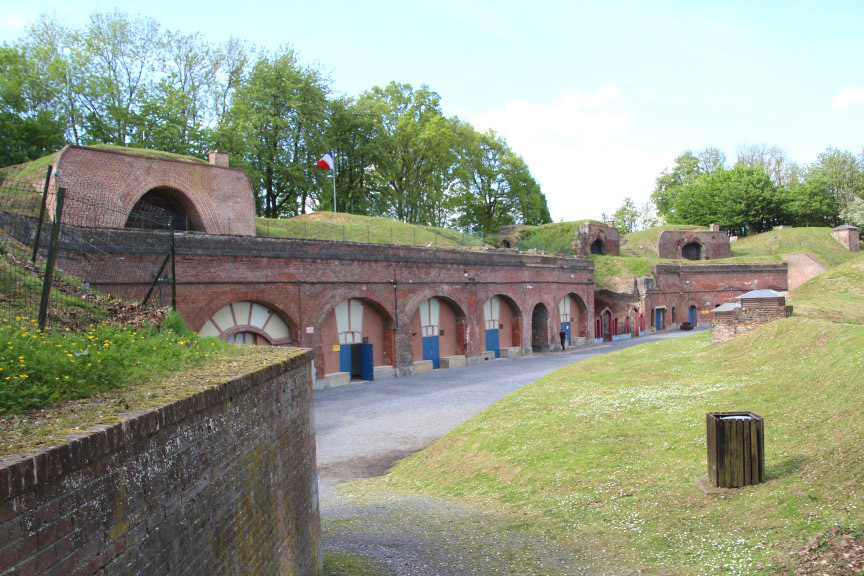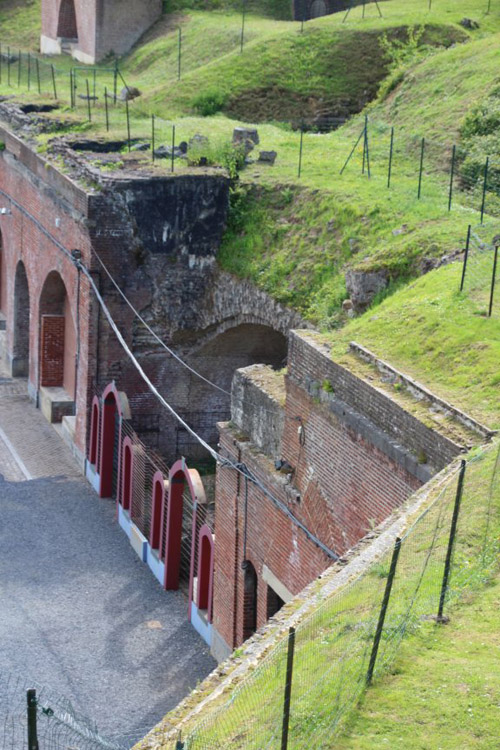Fort Leveau
The Séré de Rivières system of forts built after
the Franco-Prussian War encircled several border cities like Maubeuge.
Maubeuge had been an important border
town for centuries and the city was enclosed by walls in the 1600s.
With improved technology and increased artillery range, around
fifteen important defensive structures were built around the town
in the late 1800s. Over time the forts were updated as technology
improved, and a dirigible station was even added. In August 1914 the German army advanced through
Belgium, capturing forts like Fort Loncin at
Liege as they advanced on France as part of the Schlieffen Plan.
To advance into France, the Germans had to capture fortified
border towns like Lille and Maubeuge. Maubeuge was an important
part of the rail network, and the Germans had to take the town to
adequately supply their advancing armies. At the outbreak of war,
the garrison worked hard to improve the defenses. With German
violation of Belgian neutrality, the British sent an expeditionary
force to France, to the Maubeuge - Le Cateau area, and they advanced to
Mons, Belgium. There they were pushed back. The Belgian fortified
position at Namur was taken and French were pushed back from
Charleroi and Dinant. On August 21st, civilians began evacuating
Maubeuge. As the Allies retreated, they decided to leave the
garrison in the Maubeuge forts to delay the Germans long enough to
organize a defense. By August 27th, the town was surrounded.
On August 29th a bombardment of several of the forts commenced with the
big 305mm howitzers. On September 2nd the 420mm howitzers got to
work. By September 6th surrender was looking like the best
option, but the commander instead ordered a withdrawal of his forces to the vicinity of Fort
Leveau. The Germans brought Fort Leveau under bombardment with
their big howitzers and forced the garrison to fall back after only
half an hour. Negotiations soon ensued, and effective September
8th, the Maubeuge garrison was surrendered.

Model represents 1884. From the rear you can see some resemblance
to earlier forts. The entrance is protected by flanking fire from
what resembles large bastions. The ditch surrounding the fort is
dominated with flanking fire from caponiers at the front of the fort -
a single caponier on the right and a double caponier at left.
Inside the fort large artillery pieces sit in batteries atop
casemates protected from enfilade fire by traverses. In 1893 the
armament was upgraded to four 120mm guns.
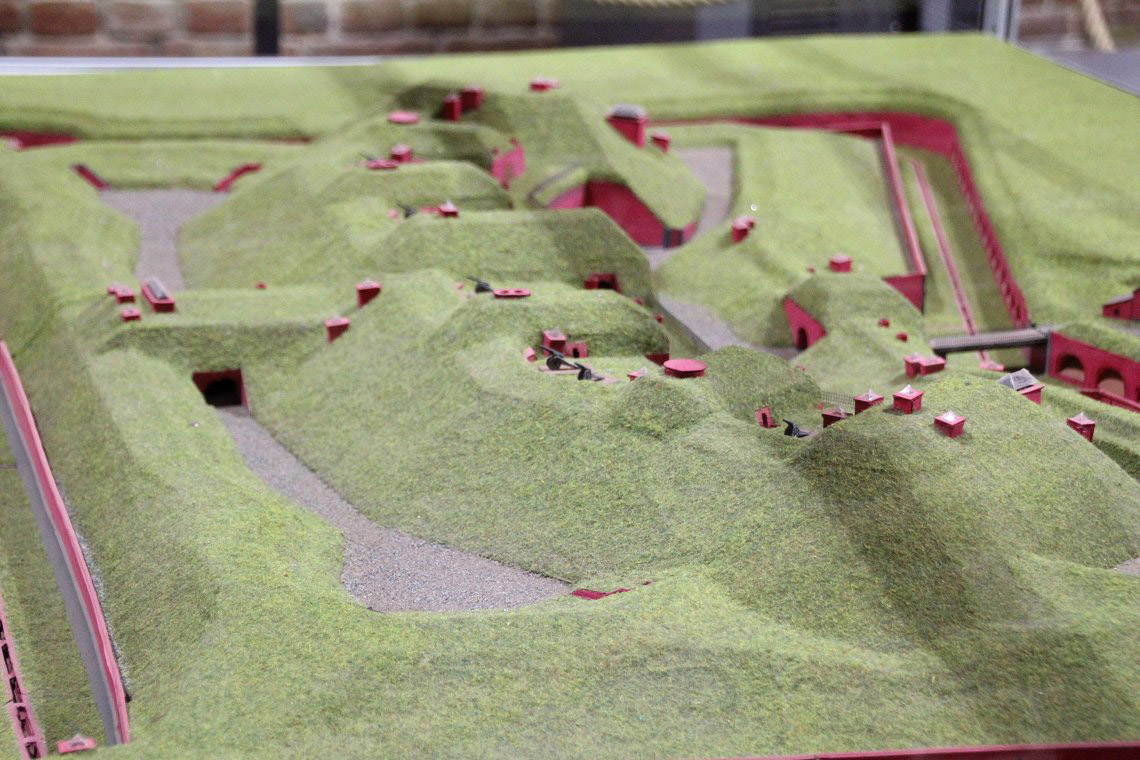
Artillery Batteries
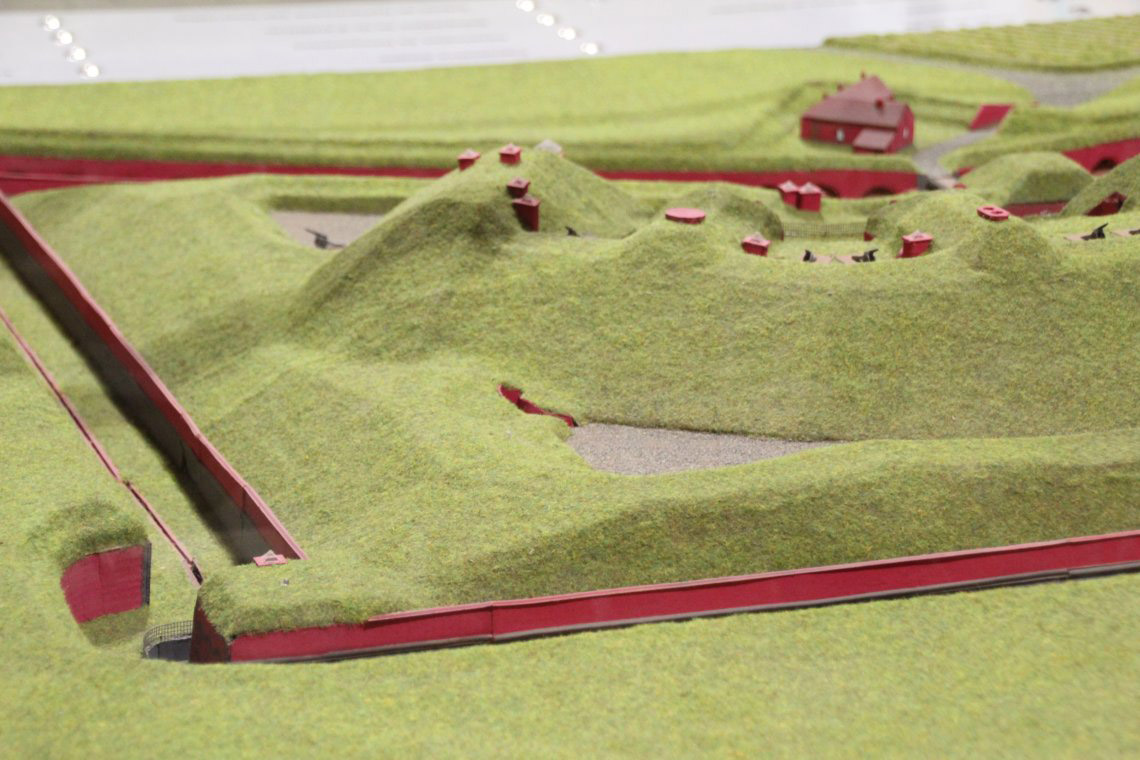
Single Caponier

A drawbridge existed near the gate. Although the fort was damaged a
great deal during the war, you can see that flanking fire protected the
gate. At the bottom of the ditch is the cuvette - the drainage
ditch. Let's go through the gate at right and tour the inside.
Through the entrance you can see the rear of the casemates and the
cavalier above - the artillery positions. One of the casemates
received a direct hit, killing as many as 120 men.

Entering the fort we walk around its left side. At either side of
the panorama you can see the ditch, 6 meters deep, overlooked by infantry firing
positions. At left there is an expanded area to accommodate the
double caponier. Overlooking it is a later modification to the
fort. At center the trail climbing to higher ground goes to the
artillery batteries - the cavalier.

The ditch in left front corner of the fort was larger to contain the double caponier which dominated the ditch.

Modifications to the fort included an armored observation post resting
in a mass of concrete, completed just as the war was about to begin.
A 75mm turret was not yet complete.

In the ditch you can see the remains of the double caponier, destroyed
by the Germans after they captured the fort. The ditch visible at
center is along the front of the fort.

Front center of the fort - a passage way runs below. The cavalier is left-center.

The right front corner was the location of a single caponier,
dominating the ditch as it runs toward the right of the panorama.
The fencing on the far left and far right of the panorama marks
our next location.

Here, passages descended to the ditch.

The caponier was destroyed by the Germans after they captured the fort.

From the site of the caponier you can see down the ditch in both
directions. The cuvette in the middle of the ditch drains
rainwater to an underground passage that flows to a nearby river.

Up on the cavalier we can see the six artillery positions and the rear
of the fort separated by five traverses also used for ammunition
storage.

From one of the battery positions you can look down to where we descended to the sit of the caponier.


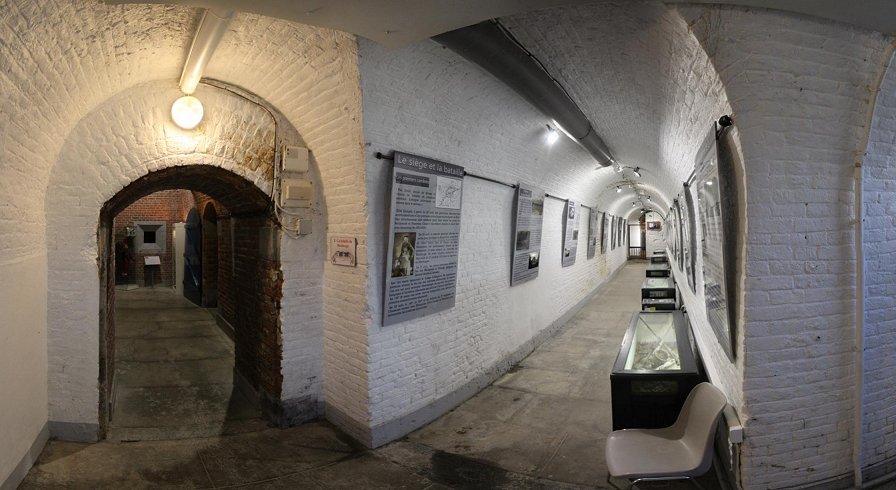
Entering the casemates we are greeted by a firing position and exhibits on the fort and the 1914 battle.
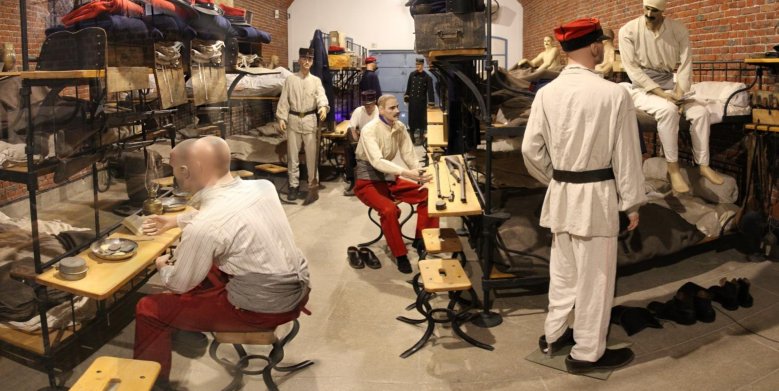
Living Quarters

At right is a living quarters casemate. From left to center is the main corridor.
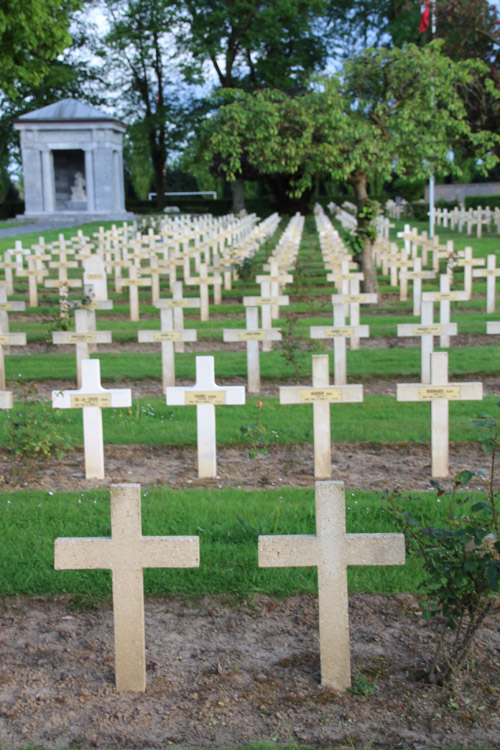
French, British, and German war graves are in the Maubeuge area.
Casualty figures for the 1914 siege are hazy. Total German
casualties were in the range of 1,100 to 2,500. French casualties
were in the neighborhood of 1,300 killed and 32,000 to 40,000 captured,
including wounded.
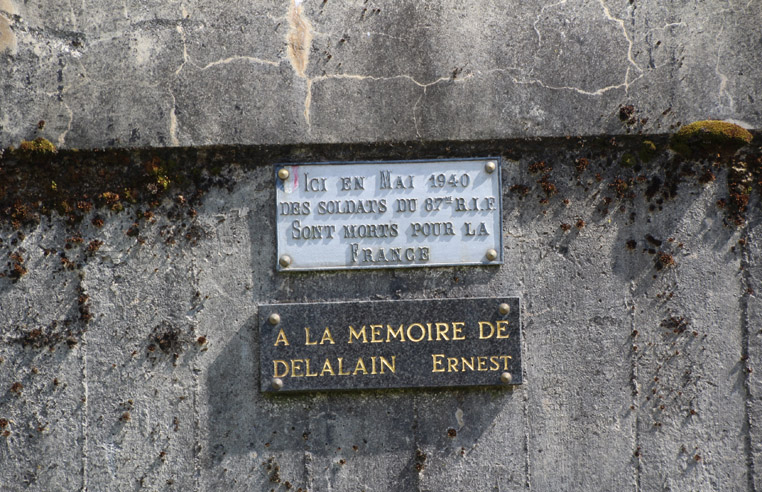
In the 1930s several Maginot type defenses were built in the area, this
one at Fort Leveau itself, captured by the Germans in 1940. In
1944, aided by the FFI, American troops liberated Maubeuge on their way
into Belgium and around the Mons Pocket.
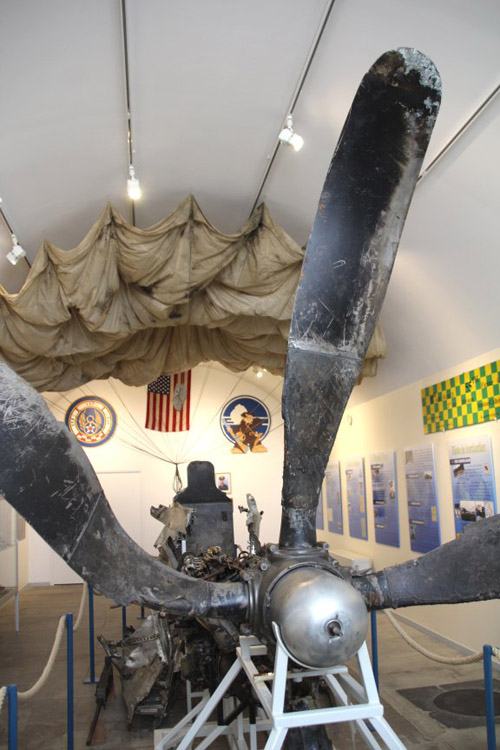
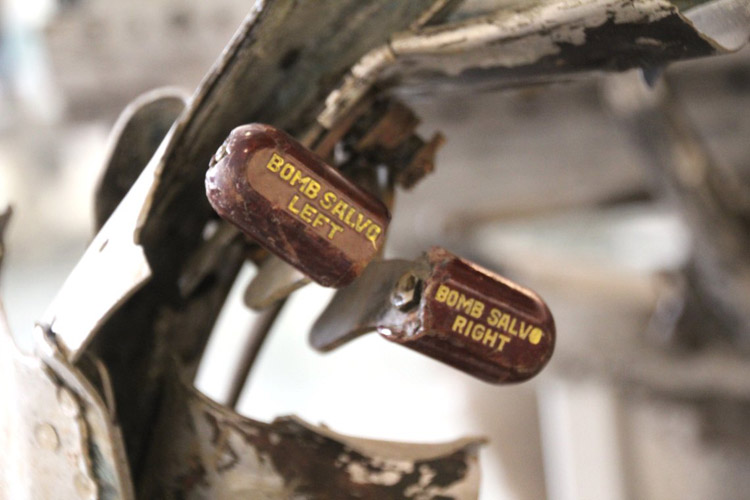
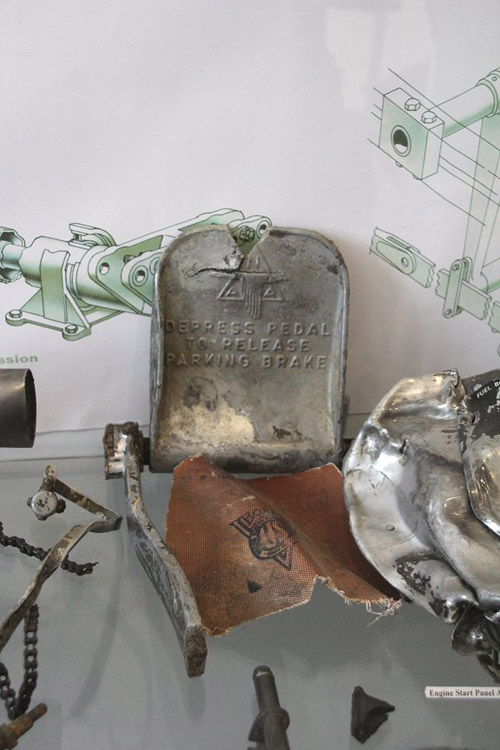
Crashed P-51
In January 1945, a P-51 Mustang supporting the Army in the Battle of
the Bulge crashed near Maubeuge. The crash took place in a poorly
drained area - muddy - and the wreckage and human remains were only
recovered and identified in 2001. The pilot, William J Patton,
lived an amazing life. Too small to be accepted into the
military, he over-ate to gain weight and was accepted into the Army at
age 16. He became a pilot, was at Hickam Field during the
December 7th attack, later participated in the Battle of Midway, then
surviving 25 bomber missions over Europe before joining a P-51 outfit.
Today the aircraft remains are on display at Fort Leveau in
memory of the pilot and all those who have fought for freedom.
Copyright, John Hamill 2017-18.
